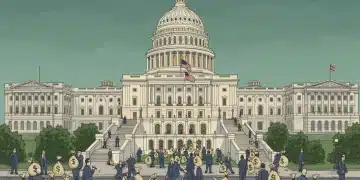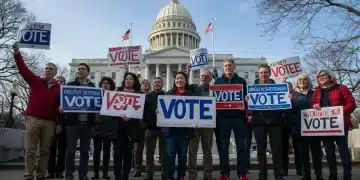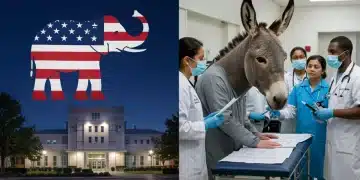Dark Money in US Politics: Transparency and Influence
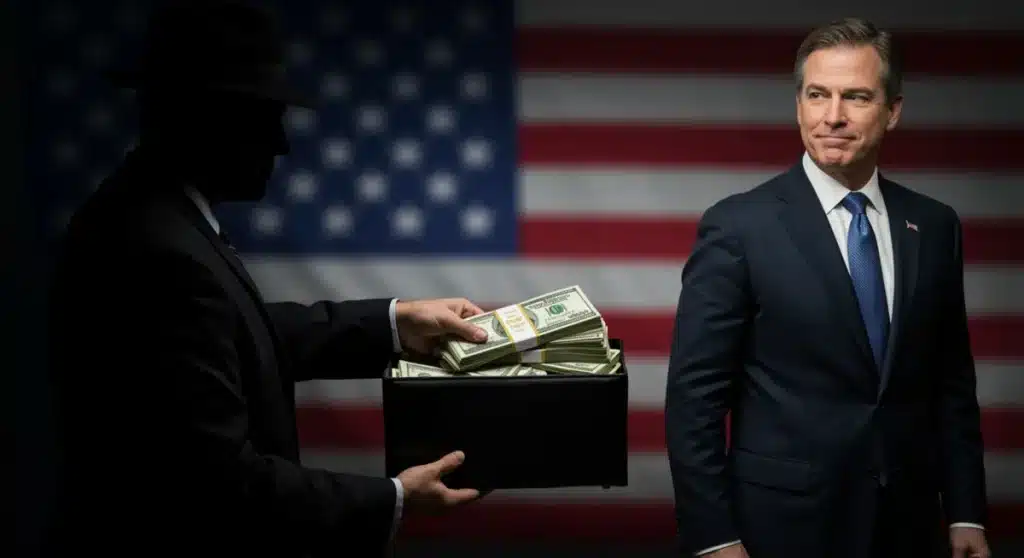
Dark money in US political campaigns refers to undisclosed spending by non-profit organizations, significantly influencing elections while obscuring donor identities, thereby undermining democratic transparency and accountability.
The landscape of American politics is increasingly shaped by financial contributions, and among the most opaque elements is the phenomenon known as dark money political campaigns. This refers to spending by groups that do not have to disclose their donors, making it difficult for the public to know who is trying to influence elections and policy decisions. Understanding its role is critical for anyone concerned with the integrity of our democratic process.
Defining Dark Money: The Veil of Anonymity
Dark money, in the context of U.S. political campaigns, refers to political spending where the source of the money is not publicly disclosed. This anonymity allows wealthy individuals, corporations, and special interest groups to influence elections and policy without revealing their identities, creating a significant challenge for transparency.
The primary vehicles for dark money are non-profit organizations, particularly those organized under sections 501(c)(4) and 501(c)(6) of the U.S. tax code. Unlike traditional political action committees (PACs), these groups are not primarily dedicated to political activity, allowing them to keep their donor lists private. While they are permitted to engage in political advocacy, their main purpose must ostensibly be social welfare or business advocacy.
The Legal Framework Enabling Anonymity
The legal foundation for dark money largely stems from the Supreme Court’s 2010 ruling in Citizens United v. Federal Election Commission. This landmark decision equated money with free speech, allowing corporations and unions to spend unlimited amounts of money on independent political expenditures. Coupled with subsequent court decisions and IRS regulations, this opened the floodgates for non-profit groups to engage in extensive political spending without donor disclosure.
- 501(c)(4) Social Welfare Organizations: These groups must primarily engage in social welfare activities, but they can spend up to 49.9% of their funds on political activities without disclosing donors.
- 501(c)(6) Business Leagues: Similar to 501(c)(4)s, these organizations advocate for business interests and can also engage in political spending without revealing their funding sources.
- Super PACs and Shell Corporations: While Super PACs must disclose their donors, they can receive unlimited contributions from individuals, corporations, unions, and other groups, including dark money non-profits, effectively becoming conduits for undisclosed funds. Shell corporations are also used to obscure the ultimate source of funds.
The lack of transparency inherent in dark money spending raises serious questions about accountability. When voters don’t know who is funding a particular message or campaign, they cannot accurately assess the motivations behind that spending or the potential influence on elected officials. This erosion of public trust is a direct consequence of the current regulatory environment.
The Mechanics of Dark Money Spending
Understanding how dark money operates requires a look into the intricate pathways it takes to influence elections and policy. It’s not a simple direct donation; rather, it’s a sophisticated network designed to shield donor identities while maximizing political impact. This complex financial architecture involves multiple layers of organizations and transactions.
Typically, a wealthy donor or corporation will contribute to a 501(c)(4) or 501(c)(6) organization. These groups then use the funds for various political activities. These activities can range from issue advocacy ads that subtly promote or attack candidates without explicitly endorsing them, to direct contributions to Super PACs, which then spend the money on behalf of candidates. The crucial point is that the original donor’s identity remains hidden from the public.
How Funds Are Dispersed and Utilized
Dark money groups employ a variety of tactics to deploy their undisclosed funds effectively. These methods are often designed to be legally permissible while still achieving significant political leverage.
- Issue Advocacy Ads: These advertisements discuss policy issues relevant to an election but stop short of directly advocating for or against a specific candidate. They are often timed to influence voters right before an election.
- Voter Mobilization Efforts: Dark money groups fund grassroots campaigns, phone banking, and digital outreach designed to encourage voters to support certain positions or candidates, again without revealing the original source of funding.
- “Ghost” Campaigns: Sometimes, dark money creates entire campaigns that appear to be grassroots but are, in fact, heavily funded by undisclosed donors, making it seem as though there is broad public support for a particular agenda.
- Lobbying and Policy Influence: Beyond direct election spending, dark money also fuels extensive lobbying efforts, directly influencing legislation and regulatory decisions without public knowledge of the financial stakeholders.
The ability of dark money to flow through these channels without public scrutiny makes it a powerful, yet often insidious, force in American politics. It allows special interests to exert influence that might otherwise be rejected by the public if the true sources of funding were known. This opacity can distort public discourse and undermine the principle of one person, one vote.
Impact on Transparency and Accountability
The core issue with dark money is its corrosive effect on transparency and accountability within the democratic system. When the public cannot identify who is funding political messages or campaigns, it becomes impossible to fully understand the motivations behind those messages or to hold politicians accountable for their alliances.
This lack of disclosure creates an uneven playing field, where powerful, often wealthy, interests can exert disproportionate influence without public scrutiny. Voters are left in the dark, unable to discern whether a candidate’s stance on a particular issue is genuinely held or if it is influenced by undisclosed financial backers. This directly undermines informed decision-making by the electorate.

Erosion of Public Trust
The prevalence of dark money actively erodes public trust in political institutions and the electoral process. When campaigns are influenced by hidden funding, citizens may feel that their voices are marginalized compared to those of undisclosed donors. This can lead to increased cynicism and disengagement from the political process.
- Undermining Campaign Finance Laws: Dark money circumvents the spirit, if not always the letter, of campaign finance laws designed to ensure transparency and prevent corruption.
- Distorting Public Discourse: Anonymous spending allows for the dissemination of potentially misleading or biased information without the public being able to trace its origin or assess its credibility.
- Creating a Sense of Inequity: The perception that elections are bought by hidden wealthy interests, rather than decided by the will of the people, can deeply damage the foundation of democratic fairness.
Ultimately, the impact on transparency is not merely an academic concern; it directly affects the quality of governance and the responsiveness of elected officials to their constituents. Without knowing who is pulling the strings, it is difficult for citizens to demand accountability or to make fully informed choices at the ballot box.
Key Players and Their Strategies
The landscape of dark money is populated by a variety of organizations and individuals, each employing specific strategies to maximize their influence while maintaining donor anonymity. Understanding these key players is essential to grasping the scope of the problem.
Conservative and liberal groups alike utilize dark money, though the volume and specific tactics can vary. Well-known organizations such as Crossroads GPS (conservative) and the Sixteen Thirty Fund (liberal) have spent hundreds of millions of dollars in recent election cycles without disclosing their donors. These groups often act as central hubs, receiving large contributions and then distributing them to a network of smaller, more specialized non-profits.
Common Strategies Employed by Dark Money Groups
These groups are adept at navigating the legal loopholes to achieve their political objectives. Their strategies are often sophisticated and multi-faceted, designed to have both immediate and long-term impacts.
- Bundling and Re-gifting: Funds are often channeled through multiple layers of non-profits. A donor might give to one 501(c)(4), which then gives to another, and finally to a Super PAC. This layering makes it incredibly difficult to trace the original source.
- Rapid Response Advertising: Dark money groups are particularly effective at launching quick, targeted ad campaigns in response to political events, often without the need for the lengthy disclosure processes that traditional campaigns face.
- Judicial Advocacy: Beyond electoral politics, dark money also plays a significant role in influencing judicial appointments and confirmations, funding advocacy groups that support or oppose specific nominees.
- Digital and Social Media Campaigns: A growing area of dark money spending is in sophisticated digital advertising and social media campaigns, which can be micro-targeted to specific voter demographics with highly tailored messages.
The involvement of these key players and their strategic deployment of hidden funds underscore the pervasive nature of dark money. Their ability to operate in the shadows allows them to shape public opinion and election outcomes in ways that are deliberately obscured from the public eye, thereby challenging the very principles of a transparent democracy.
Efforts to Combat Dark Money and Promote Disclosure
Despite the pervasive nature of dark money, there have been ongoing efforts from various sectors to combat its influence and promote greater transparency in political spending. These efforts range from legislative proposals to grassroots advocacy and journalistic investigations.
Advocacy groups and reform organizations continuously push for stricter campaign finance laws that would mandate disclosure for all political spending. They argue that knowing who is funding political messages is a fundamental right of voters and essential for a healthy democracy. Public awareness campaigns also play a crucial role, educating citizens about the impact of hidden money.
Legislative and Regulatory Proposals
Several legislative initiatives have been proposed at both federal and state levels to address the issue of dark money. These proposals aim to close loopholes and expand disclosure requirements.
- DISCLOSE Act: This proposed federal legislation would require organizations spending money in elections, including 501(c)(4)s, to disclose their donors. It has been introduced multiple times but has faced significant political hurdles.
- State-Level Reforms: Many states have taken their own initiatives, implementing stronger disclosure laws for independent expenditures and lobbying activities, offering potential models for federal reform.
- IRS Rule Changes: Some advocates argue for changes to IRS regulations for 501(c) non-profits, specifically to clarify and restrict their political spending activities and mandate donor disclosure when such spending occurs.
Beyond legislative action, journalistic investigations and watchdog organizations play a vital role in uncovering the sources and impact of dark money. Through meticulous research and data analysis, these groups often shed light on otherwise hidden financial networks, bringing critical information to the public. However, the sheer volume and complexity of dark money flows make this an uphill battle, requiring sustained effort and public support to drive meaningful change.
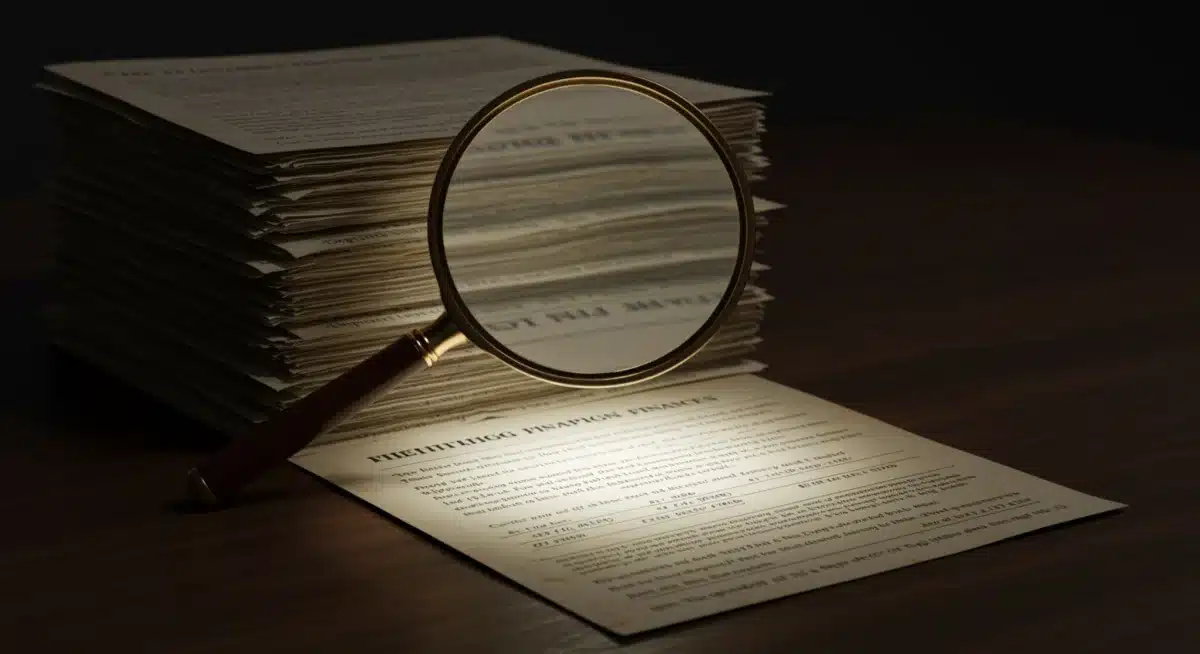
The Future of Campaign Finance: A Call for Reform
The ongoing struggle against dark money highlights the urgent need for comprehensive campaign finance reform in the United States. Without significant changes, the influence of undisclosed spending will continue to undermine democratic principles and public trust. The future of American elections hinges on our ability to ensure a transparent and equitable system.
A truly effective reform would need to address the root causes of dark money’s proliferation, including the interpretation of free speech rights in relation to money and the regulatory framework for non-profit political activity. It requires a balanced approach that respects constitutional rights while safeguarding the integrity of the democratic process.
Potential Pathways for Reform
Several key areas could be targeted for impactful reform, each aiming to bring more light into the shadows of political finance. These pathways involve a combination of legal, regulatory, and systemic changes.
- Mandatory Donor Disclosure: Requiring all organizations engaged in political spending to disclose their donors, regardless of their tax status, would be the most direct way to combat dark money.
- Strengthening the FEC: Empowering the Federal Election Commission with greater enforcement capabilities and providing it with sufficient resources to investigate and prosecute campaign finance violations is crucial.
- Public Financing of Elections: Implementing systems of public financing for elections could reduce the reliance of candidates on large private contributions, thereby lessening the incentive for dark money spending.
- Constitutional Amendment: Some argue that a constitutional amendment is necessary to clarify that money is not speech and to allow for more robust regulation of campaign finance.
The journey toward a more transparent campaign finance system is undoubtedly challenging, fraught with legal battles and political opposition. However, the stakes are too high to ignore. A vibrant democracy depends on citizens having full knowledge of who is attempting to influence their votes and their government. Without reform, the shadows of dark money will only continue to lengthen over American politics.
| Key Aspect | Brief Description |
|---|---|
| Definition | Undisclosed political spending by non-profit organizations, obscuring donor identities. |
| Legal Basis | Primarily enabled by the Citizens United ruling and IRS non-profit regulations. |
| Impact | Erodes transparency, distorts public discourse, and undermines public trust in democracy. |
| Reform Efforts | Legislative proposals (DISCLOSE Act), state reforms, and calls for stronger FEC enforcement. |
Frequently Asked Questions About Dark Money
The key distinction is disclosure. Super PACs can raise and spend unlimited amounts of money but must disclose their donors. Dark money groups, primarily 501(c)(4)s and 501(c)(6)s, do not have to disclose their donors while engaging in significant political spending.
Dark money can significantly influence elections by funding extensive advertising campaigns, voter mobilization efforts, and issue advocacy without public knowledge of the funders. This can sway public opinion and voter behavior, often without accountability for the messages disseminated.
No, dark money organizations operate legally under current IRS and campaign finance laws. They are typically structured as non-profits whose primary purpose is not political, allowing them to avoid donor disclosure requirements that apply to other political entities.
The 2010 Citizens United v. Federal Election Commission Supreme Court ruling allowed corporations and unions to spend unlimited amounts on independent political expenditures. This decision paved the way for the proliferation of dark money groups by equating money with free speech, enabling undisclosed spending.
Increasing transparency requires legislative reforms like the DISCLOSE Act, which mandates donor disclosure for political spending. Stronger enforcement by the FEC, changes to IRS regulations for non-profits, and exploring public financing for elections are also crucial steps.
Conclusion
The examination of dark money in political campaigns reveals a complex and deeply entrenched issue that significantly impacts the integrity of American democracy. Its hidden nature allows powerful interests to influence elections and policy decisions without public accountability, eroding trust and distorting the democratic process. While combating dark money presents considerable challenges, sustained efforts in legislative reform, stronger regulatory oversight, and increased public awareness are essential to fostering a more transparent and equitable political landscape for all citizens.

